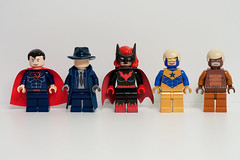This semester, I’m co-teaching a human rights internship course. Beyond providing some practical skills for students who are interested in working in the human rights field, the course aims to connect human rights theory to students’ experiences in their internships. Needless to say, the Kony 2012 campaign was a perfect topic to discuss recently. However, since Invisible Children’s Cover the Night event is coming up on April 20th, there is still plenty of time to discuss the campaign in class, and TSP has provided an additional tool (an episode of Office Hours discussed below) to aid in this discussion.
As many (if not all!) of you know, Invisible Children’s Kony 2012 video quickly received over 100 million views. Over night, it seemed like many people who had never heard of Joseph Kony were calling for justice. However, the video sparked debate in scholarly communities, communities of human rights activists, and even among the broader public.
During the week the video went viral, my students were reading James Dawes’ book, That the World May Know: Bearing Witness to Atrocity, which explores motivations behind human rights work as well as the relationship between story telling and human rights. Specifically, the book’s emphasis on how human rights abuses are framed through stories made the book a perfect base for a discussion about the Kony 2012 campaign.
As a class, we started talking about the book with the basic question of what storytelling has to do with human rights. After we established that we all learn about human rights abuses around the world through stories and representations on the news, in newspapers, and through various social movements and advocacy groups, we moved on to the Kony 2012 campaign. Most students had seen the video, but I asked a student to give a brief review in case someone hadn’t seen it. Then, we discussed the following questions:
1) What is the purpose of the video?
2 ) In your opinion, was Invisible Children successful in fulfilling this purpose?
3) Why did the video go viral? (What properties of the video/tactics of the campaign influenced its popularity?)
4) What are most common critiques of the video?
5) What are the difficulties in representing human rights abuses?
TSP member Shannon Golden also recently interviewed Amy Finnegan, who has studied the relationship between Invisible Children and local Ugandan activists. Amy and Shannon talk about the Kony 2012 campaign and Amy’s research in an episode of Office Hours located here. This episode would be a great addition to the discussion or could be assigned as homework. We know that many of you have also discussed this campaign in your classes and would love to hear about it!





